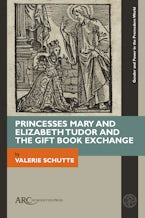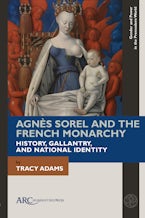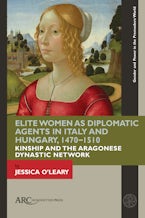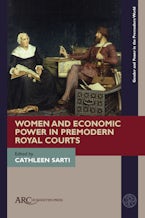- Home
- Gender and Power in the Premodern World
- history
- Princesses Mary and Elizabeth Tudor and the Gift Book Exchange
Princesses Mary and Elizabeth Tudor and the Gift Book Exchange
Series: Gender and Power in the Premodern World
106 Pages, Trim size: 6 x 9 in
- Hardcover
- 9781641893541
- Published: April 2021
$95.00
£79.00
This is the first book to offer a comparison of these two famous Tudor queens as princesses, suggesting that their early lives need to be more closely examined together. It offers a detailed case study of the four extant dedications that Elizabeth Tudor wrote to accompany manuscript translations that she gave to Henry VIII, his then wife, Katherine Parr, and to Elizabeth's brother Edward (VI of England) as New Year’s gifts from 1545 to 1548. Additionally, it seeks to compare Elizabeth with her sister Mary, beginning with pre-accession dedications given to each of them, exploring two of Mary's own translations, moving to their typical patterns of New Year's gift giving, and ending on the textual transmission of their translations that were later published in 1548. It argues that Elizabeth’s dedications to her family, while participating in the tradition of giving books, were unique and in the dedications she intended not only to represent her loyalty but also to stabilize her position within the royal family.
Introduction: Partners in Both Book and Manuscript
Chapter 1 – Pre-accession Book Dedications to Mary and Elizabeth
Chapter 2 – Mary’s Pre-Accession Translations
Chapter 3 – Elizabeth’s Pre-Accession Translations
Chapter 4 – New Year’s Gifts Given and Received by Mary and Elizabeth
Chapter 5 – Publishing Princess Elizabeth
Conclusion
Select Bibliography
Index
Valerie Schutte has published widely on royal Tudor women and book dedications. She has edited or co-edited four volumes on Mary I, Shakespeare, and queenship.
In this concise, well-written book, Valerie Schutte examines the ways that Mary and Elizabeth participated in England’s literary world before they became queens. Additionally, Schutte argues that Elizabeth’s translations must be analyzed within the larger context of courtly gift-giving to fully understand the princess’s motivations behind her translations. By evaluating both young women’s translations together with the number of works dedicated to them, it is clear that Mary was considered much more important at the royal court than was Elizabeth. This important study redresses the imbalance created by past scholarship that tended to focus on Elizabeth’s scholarly accomplishments while either minimizing or ignoring Mary’s. ~Catherine Howey Stearn, Early Modern Women 18, no. 2 (Spring 2024): 366-68








